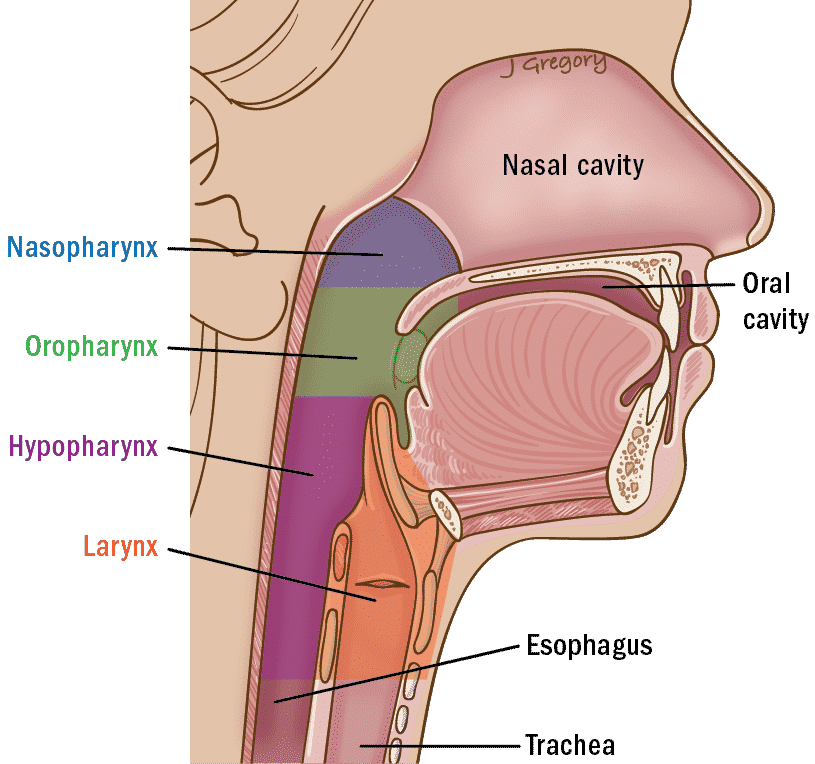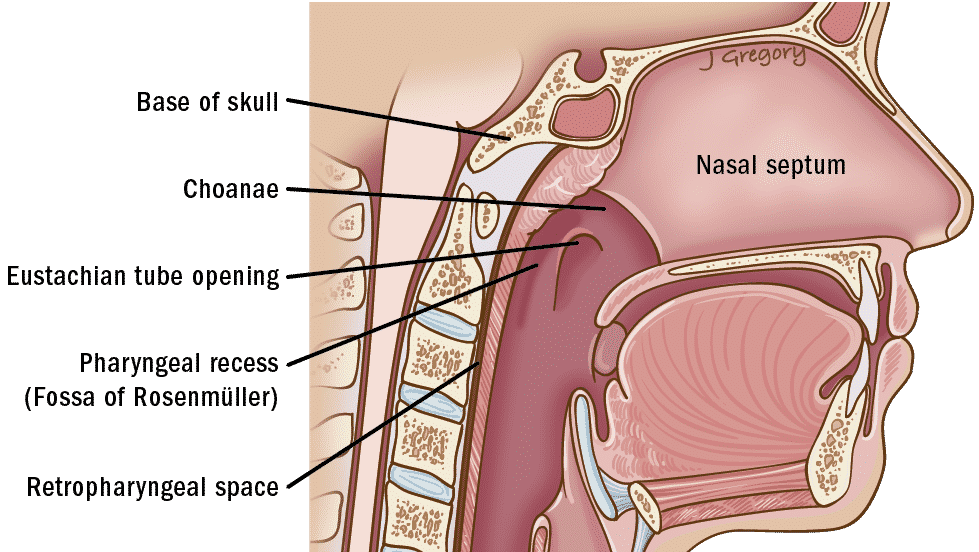
In order to begin to understand nasopharyngeal cancer, it is important to understand the anatomy of the region. The nasopharynx is part of the throat (along with the oropharynx and hypopharynx) and is located directly behind the nasal cavity, above the oropharynx, and above and behind the soft palate. The nasopharynx is shaped like a small box that is 2-3 centimeters wide and 3-4 centimeters tall. When the soft palate lifts up, it forms the floor of the nasopharynx (or the bottom of the box). The nasopharynx is positioned just under and in front of the base of the skull.
Important Structures of the Nasopharynx

- Choanae: The entrance from the back of the nose into the nasopharynx. There are two choanae, one from either side from the nose, which are divided by the nasal septum. If a tumor were to block one of these, it would prevent the flow of air and make it difficult to breathe from that side of the nose.
- Eustachian tubes: The Eustachian tubes, sometimes called the auditory tubes, lie on either side of the nasopharynx and connect to the middle ear. The Eustachian tubes help equalize pressure inside the ears and drain mucus from the middle ear. If a nasopharyngeal tumor were to block one of the Eustachian tubes, it would cause a buildup of mucus in the middle ear, which could cause hearing impairment or an ear infection.
- Pharyngeal recess (also called the Fossa of Rosenmuller): This is a slit-like space just behind the opening of the Eustachian tube into the nasopharynx. The pharyngeal recess is the most common site for nasopharyngeal cancer to start. If a tumor in this region were to grow deep toward the skull base, it may not cause any symptoms in the nasopharynx, and may therefore be diagnosed very late.
- Base of skull: The nasopharynx is located right below and in front of the base of the skull. On the other side of the base of the skull is the brain. Advanced nasopharyngeal cancers can destroy the bone at the base of the skull, enter the cranial cavity, and affect the brain.
- Retropharyngeal space: This is a space behind the pharynx, in front of the spine. Nasopharyngeal cancers can spread to lymph nodes in this space.












